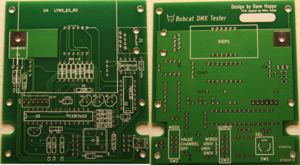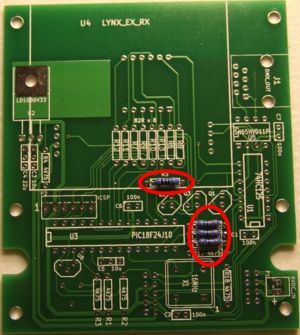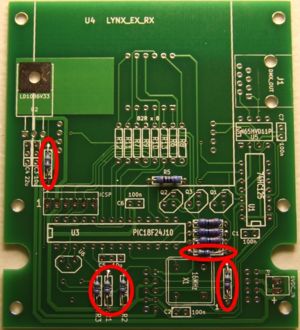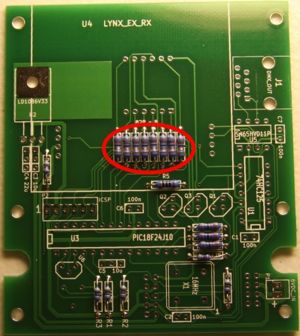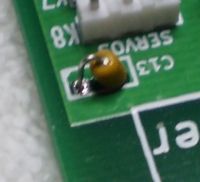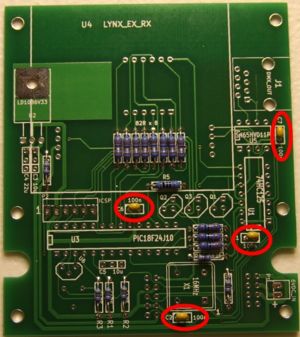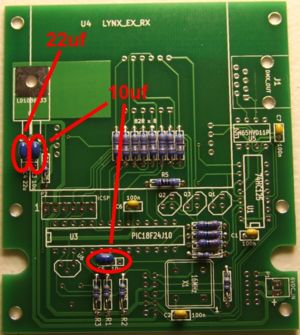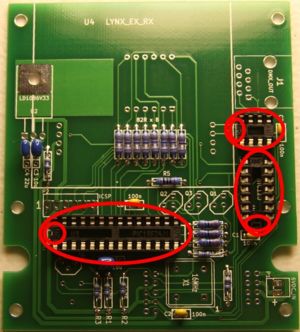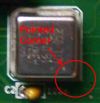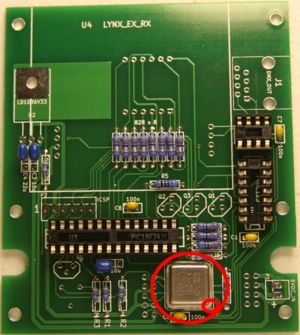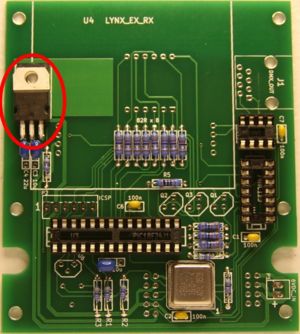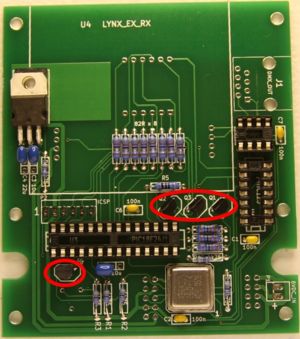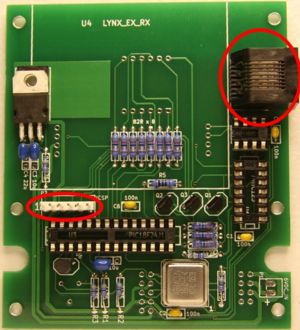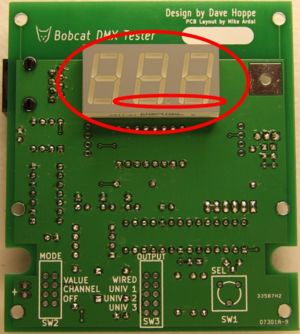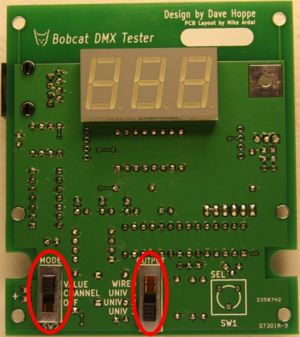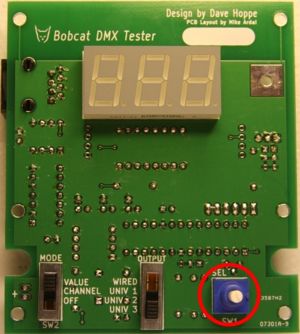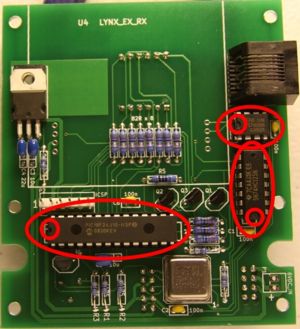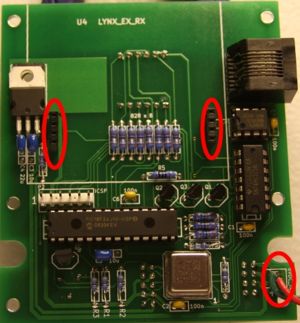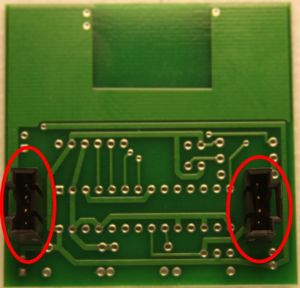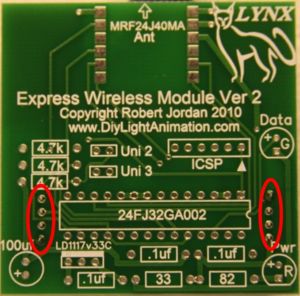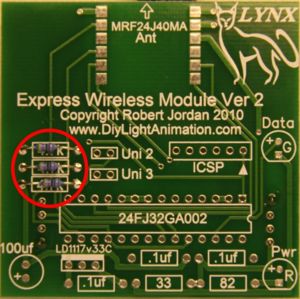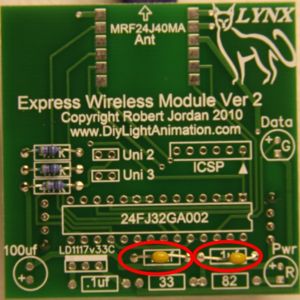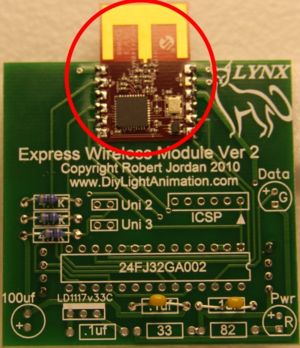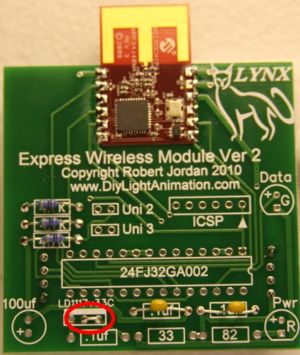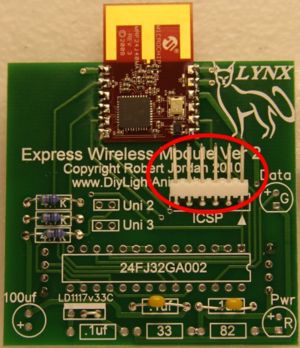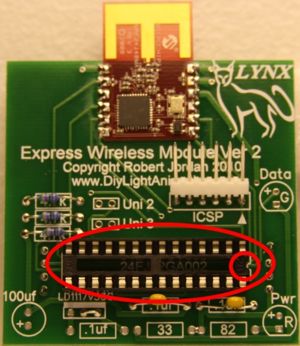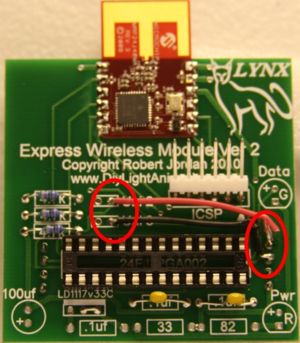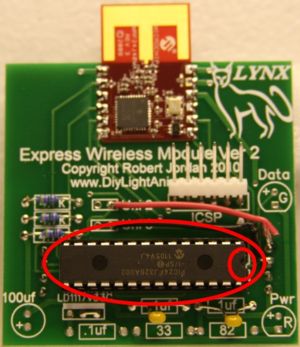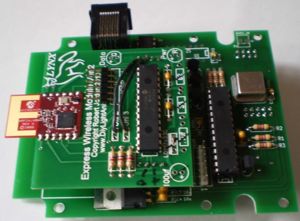Manual Tester
Contents
Notice
The PIC does NOT come pre-programmed from Microchip or any supplier. If you do not have a programmer then please see the PIC Programming Wiki page for a list of DLA users who can program the PIC for you. If you are programming the PIC yourself, download the hex file from the Wiki and program the PIC chip using the appropriate steps for your programmer setup. Check out this post for a helpful pdf on PIC programming. Some helpful tips on PIC programming can also be found on this You Tube video.
Introduction
This is the manual to guide you through the build process of the DMX Tester.
WARNING! As with all equipment associated with DLA, this device has been designed for personal use as a means of education and entertainment. As such it is not rated, tested, or approved for use in commercial environments and such use is forbidden by the designer. Improper use of this equipment could be hazardous to life and property and the suitability of use is your responsibility. DLA and/or the designers of this device assume no responsibility in the use or operation of this equipment or for the accuracy of any information made on part of itself. This device has been designed for non-commercial, hobbyist use only. No warranties are written or otherwise made. It should be considered an experimental device with possible unknown characteristics.
Before you start the build, use the Mouser Direct link on the wiki page to verify you have the correct parts and quantity of parts before we go any further. Please use static electricity precautions in the handling of these parts (ground straps, etc.). If you are not familiar with them please research on the Internet prior to handling them. You can damage your parts with improper handling!
Ensure you are using the correct DMX Tester PCB for this build.
Preparing to Build (Advice from RJ)
The next thing we want is to make sure you are up to speed on soldering and electrostatic protection of the components in your kit. If you are not an experienced printed circuit builder, visit the Curious Inventor website and review the How to Solder guides just below the video. The video on soldering correctly at the top of the page is extremely good to watch even if you are experienced at soldering.
Another issue you must be aware of is that some electronic components can be damaged easily by electrostatic charges that can build up in you or your equipment. We have all been shocked by walking on carpet and grabbing a doorknob. This is electrostatic charge in action. It takes much less than this to hurt some of the parts. If you are unfamiliar with procedures to protect from this, please use the Internet to research it before opening your parts up. You can damage your parts with improper handling!
You will need a few tools to build the DMX Tester. You will need a good soldering iron. I cannot stress enough that a good soldering iron makes a big difference in these projects. The little 15w cheap irons are more apt to hurt your parts by taking too long to get the parts up to soldering temperature than a good iron which can bring it up to temp very fast. Remember, damage is a factor more in how long you keep the part hot than it is how hot you get it (within reasonable soldering temperatures). A good soldering iron is reasonable: You can purchase one for $30 to $60. Most any product that calls itself a soldering station that includes a temperature control separate from the iron itself will more than likely be fine, but make sure it is rated for more than 15 watts. I use a cheap Weller like this: Weller Soldering Station. It works fine and is very inexpensive. I even saw this model on sale at Sears. Radio Shack has a very nice looking digital model on sale but be careful: it does not allow you to replace the tip. Tips are a part that wear out and need to replace them from time to time. While we are on the topic of tips, get some. I recommend you get the smaller chisel shape as this works very well for all-around board building.
You need solder, so buy some. I recommend .032 size as the larger sizes tend to cause you to put too much solder on. How much? Go ahead and get a 1 lb spool as it’s cheaper in large volume and you will go through it faster than you think. Make sure you are getting rosin core for electronics; they make some solder for plumbing that has acid as the core and this is a bad mistake to make.
You need some work area to work with good lighting. Do not attempt to solder circuit boards in poorly lighted areas. If you wear reading glasses, go get them: you will want them I promise you. I also recommend getting a helping hands tool similar to this: Helping Hands Tool.
PCB Assembly
If this is your first build we have laid out the order for soldering the components to the board in a step by step procedure for you to follow. Components are outlined in red for each step as they are soldered to the board. Ensure that you orient the parts as shown on the PCB and in the assembly pictures.
- Install the 1k5 ohm (brown,green,red) resistors at right.
- Install the 100 ohm (brown,black,brown) resistor at center.
Resistors can be installed in either direction. There is no polarity to worry about. However, it looks more professional to have the color bands all in the same orientation.
(Please note that your component color and/or size may not exactly match what you see in these photos. Please verify component characteristics before installing.)
- Install the 4k75 ohm (yellow,purple,red) resistors at left and bottom.
(Please note that your component color and/or size may not exactly match what you see in these photos. Please verify component characteristics before installing.)
- Install the 82 ohm (gray,red,black) resistors at upper center.
(Please note that your component color and/or size may not exactly match what you see in these photos. Please verify component characteristics before installing.)
Special Note:
There will also be times when you have an axial format capacitor, but the holes in the PCB are close together. In that case, you can stand the cap up on end to get it to fit. See the photo below for an example.
- Install the .1uf capacitors at bottom and right. The part may be labelled "104". The PCB may show "100n" instead of ".1uf". They are equivalent.
Ceramic capacitors can be installed either way. There is no set polarity.
(Please note that your component color and/or size may not exactly match what you see in these photos. Please verify component characteristics before installing.)
Special Note: The photos in this manual show some capacitor locations to have 3 holes. The release version of the PCB will only have 2 holes.
- Install the 22uf capacitor at left. The part may be labelled "225".
- Install the 10uf capacitors at bottom and left. The part may be labelled "105"
Ceramic capacitors can be installed either way. There is no set polarity.
(Please note that your component color and/or size may not exactly match what you see in these photos. Please verify component characteristics before installing.)
- Install sockets
Be sure to orient the sockets so that the notch is at the correct end. Please note the printing on the PCB for correct orientation.
- Install Clock
Be sure that the corner of the clock that comes to a sharp point is oriented correctly with the printing on the PCB. (Pointed corner should be at lower right)
- Install regulator
You'll need to bend the legs of the regulator so it lays on it's back. A pair of needle-nose pliers will do the trick. You could also get away with bending it over after it's soldered in. There's really no need to add the screw. The back of the regulator does not need to be tight to the PCB.
- Install supervisory chip
- Install transistors
Be sure to not mix up the supervisory chip and the transistors. They look alike from a size and shape perspective. However, they do have different markings. The supervisory chip as at lower left, and the three transistors are together higher and to the right. Make sure you identify them properly.
- Install ICSP header
- Install RJ45 socket
Flip the board over for the following components.
- Install LED Display
Make sure the decimal places are along the bottom. It's the only way to tell if the LED display is oriented correctly.
- Install Mode Switch
- Install Output Select Switch
Try to orient the switches straight up and down. The holes do have some play. This makes a nicer looking fit in slots cut from the enclosure.
- Install Rotary Encoder
The encoder must go in so that it is square with the printing on the PCB.
- Install ICs
Be sure to orient the chips correctly. Chips will either have a "notch" at one end that corresponds to the notch in the socket. Or they'll have a small dot near pin one, which also corresponds to the notched end of the socket.
- Install Ex/Rx Headers and power lead.
Be sure to get the power lead polarity correct.
Build the Ex/Rx as a Wireless Transmitter
- Install the Ex/Rx headers.
Please take note of which plug was used on the main Tester PCB. You'll need male on one component, and female on the other.
Turn the board over and solder the headers in place.
- Install the 4k75 ohm (yellow,purple,red) resistors at left.
- Install the .1uf capacitors at bottom.
Ceramic capacitors can be installed either way. There is no set polarity.
- Install the RF board.
- Install a jumper across the right two holes where the regulator normally goes. You can use a cut-off lead from the resistors after soldering and trimming.
- Install the ICSP header if desired. Header must be either bent over, or mounted on the bottom of the board to fit into enclosure.
- Install PIC socket
Be sure to orient the socket so that the notch is at the correct end. Please note the printing on the PCB for correct orientation.
- Install two jumper wires as shown in photo for the universe control.
- Install the IC.
Be sure to orient the chip correctly. Chip will either have a notch at one end that corresponds to the notch in the socket. Or it will have a small dot near pin one, which also corresponds to the notched end of the socket.
Here's the fully assembled Tester PCB with Ex/Rx (as Tx) installed
Getting Up and Running
Program the PIC for the tester and the PIC for the Ex/Rx. Please see the top of this manual for PIC programming tips, and main equipment page for firmware links.
Please note that the Ex/Rx uses a special firmware to enable it as a transmitter. The link for the special Ex/Rx firmware is also on the equipment page.
Features and Uses
Dual Input Modes:
The tester has two modes of input. The "Mode" switch not only powers the unit on and off, it also selects the input mode for the encoder. While in "channel mode", the encoder input scrolls through the available channels in either direction. When it gets to the end of the channel list, it will "wrap around" if the encoder continues to be turned in that same direction. The channel values can be represented as "1..512-ALL-1..512-ALL...etc". The "ALL" selection means that all 512 channels are active and will be affected by changes in the dimmer value. When placed in "dimmer mode", the encoder will then control the dimmer value sent to the currently selected channel. Dimmer values are represented as "0..255-PLS". The "PLS" value offers a means to flash the selected channel(s) on and off at a steady rate. This is a feature that was introduced to help determine wireless range and transmitter placement. Although it will surely be useful for other purposes.
x10 multiplier
The x10 multiplier allows for quickly traversing values with the encoder. It works in either mode. The multiplier is triggered by the speed the encoder is turned. When turned slowly, the values increment/decrement by 1. When the encoder is turned fast enough, the multipler kicks in and values are incremented/decremented by 10. By slowing down the speed at which the encoder is turned, it will automatically revert to increment/decrement by a value of 1 again.
Battery operated (4AA alkaline or rechargeable batteries)
Making this device battery-operated was crucial to it's usability as a trouble-shooting and setup tool. In wireless mode, you can freely walk around your property testing individual or all channels without being tethered by wires in any way. Alkaline or rechargeable batteries can be used. Battery life for 2400mA batteries is approximately 24 hours of continuous on-time in wireless mode, and approximately 40 hours of on-time in wired mode. The tester has a built-in battery monitor. When the batteries get close to the lower limit of available charge, the third decimal place on the LED output will flash. When this occurs it's time to change or re-charge the batteries.
DMX Connectivity
The tester can be used in wired or wireless mode. The RJ45 jack is compatible with all Lynx DMX equipment and can be connected with standard cat-5 network cable. The wireless feature is also compatible with all Lynx DMX-based wireless equipment. Simply choose one of three universe settings on the output select switch and the tester will broadcast DMX just like the Lynx Tx.
NOTE: When changing the output mode from one universe to another universe, the power must be cycled for the Ex/Rx to detect the new setting.
